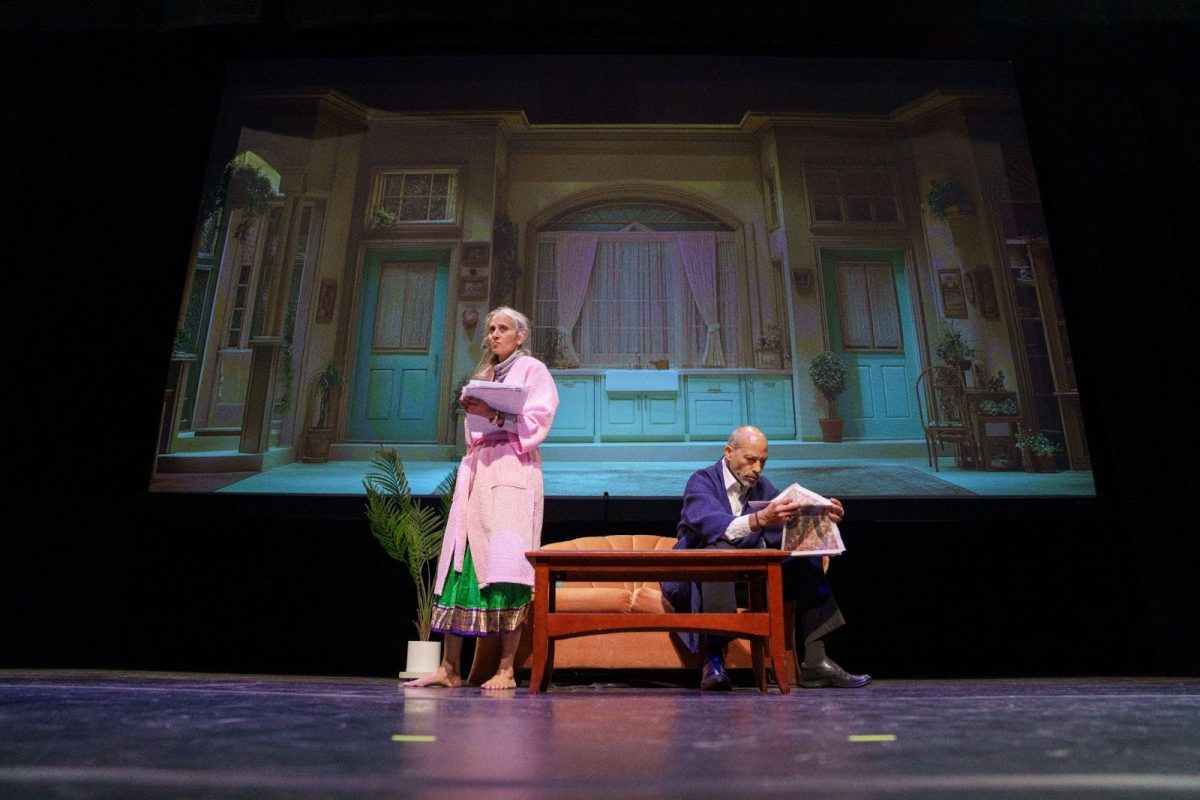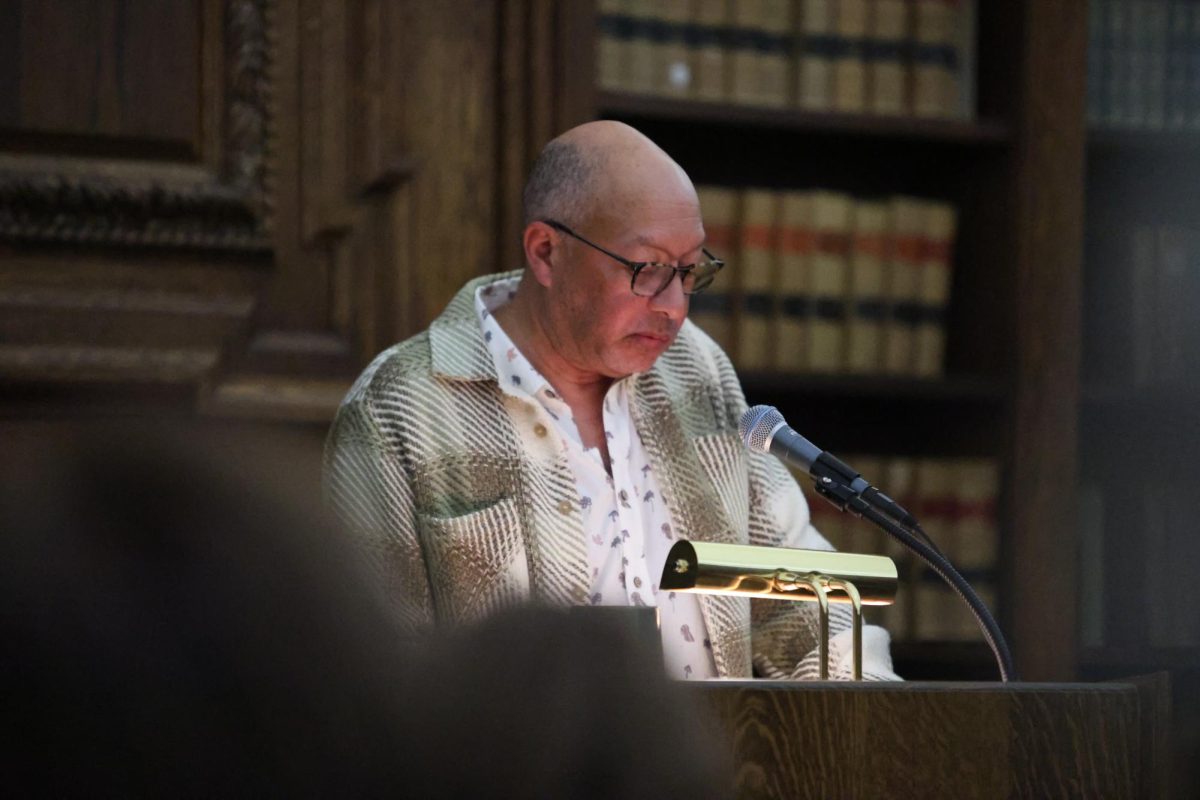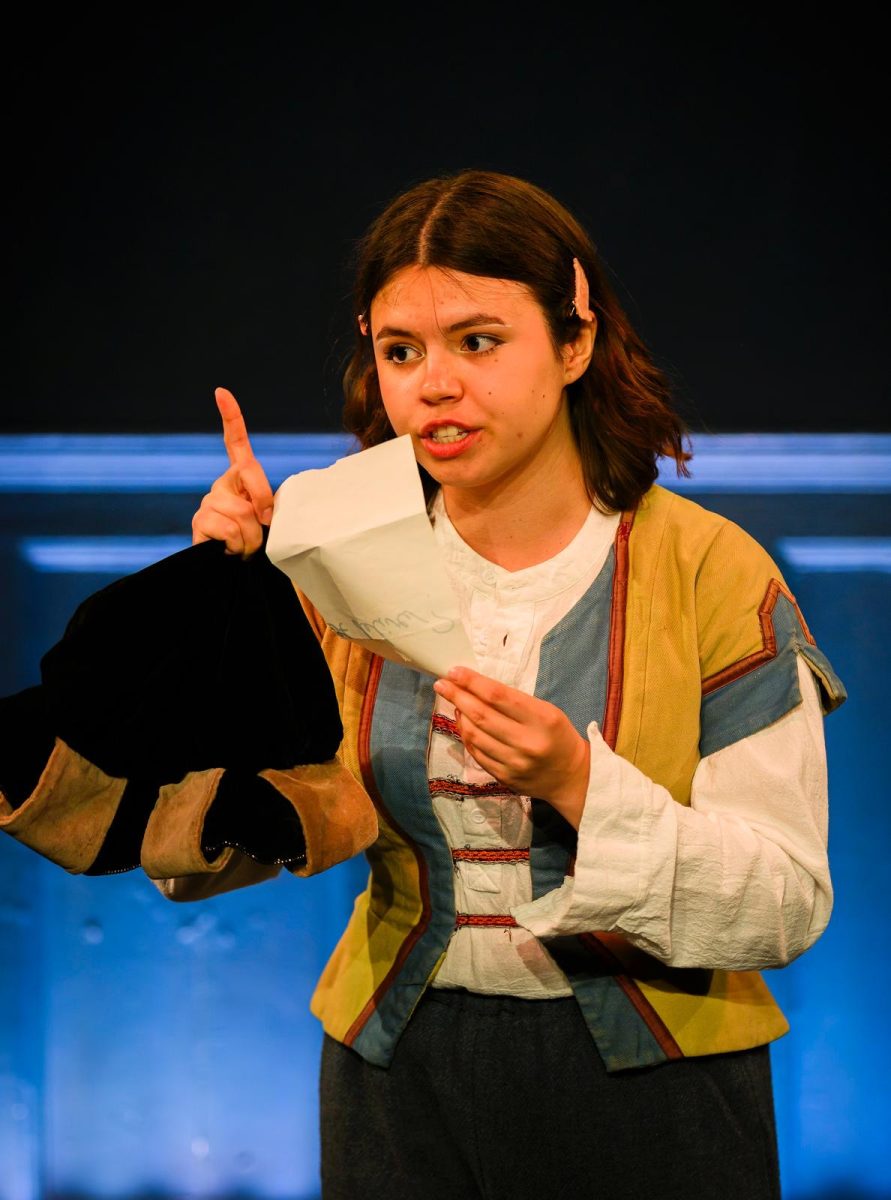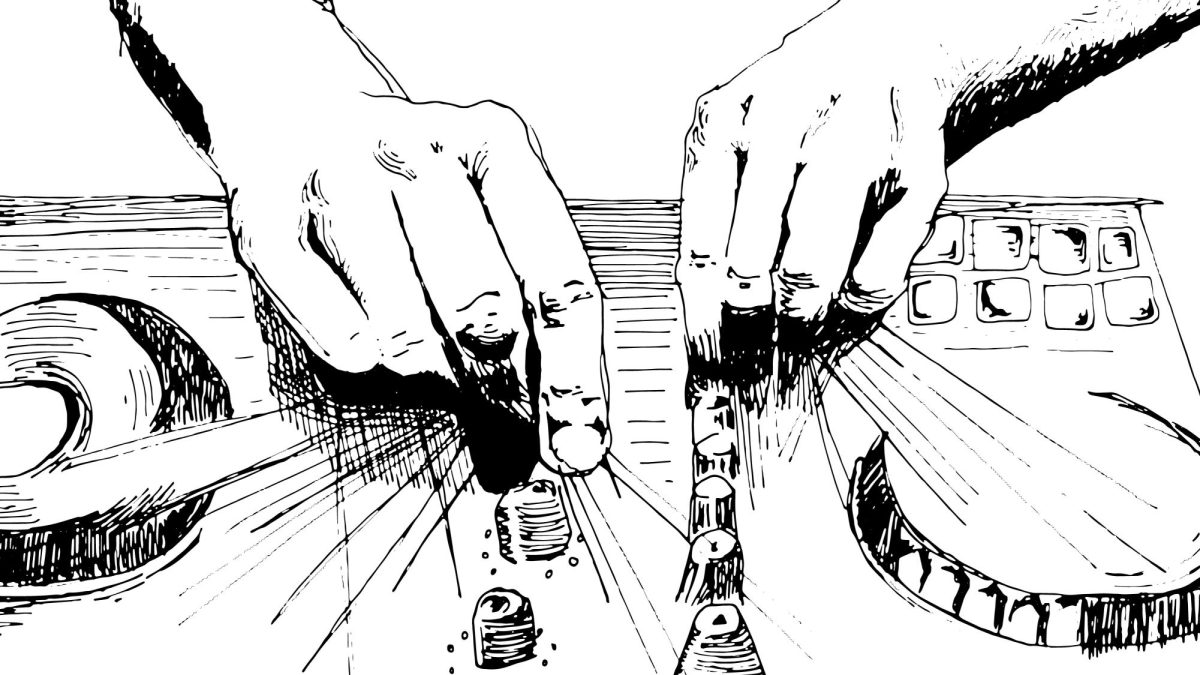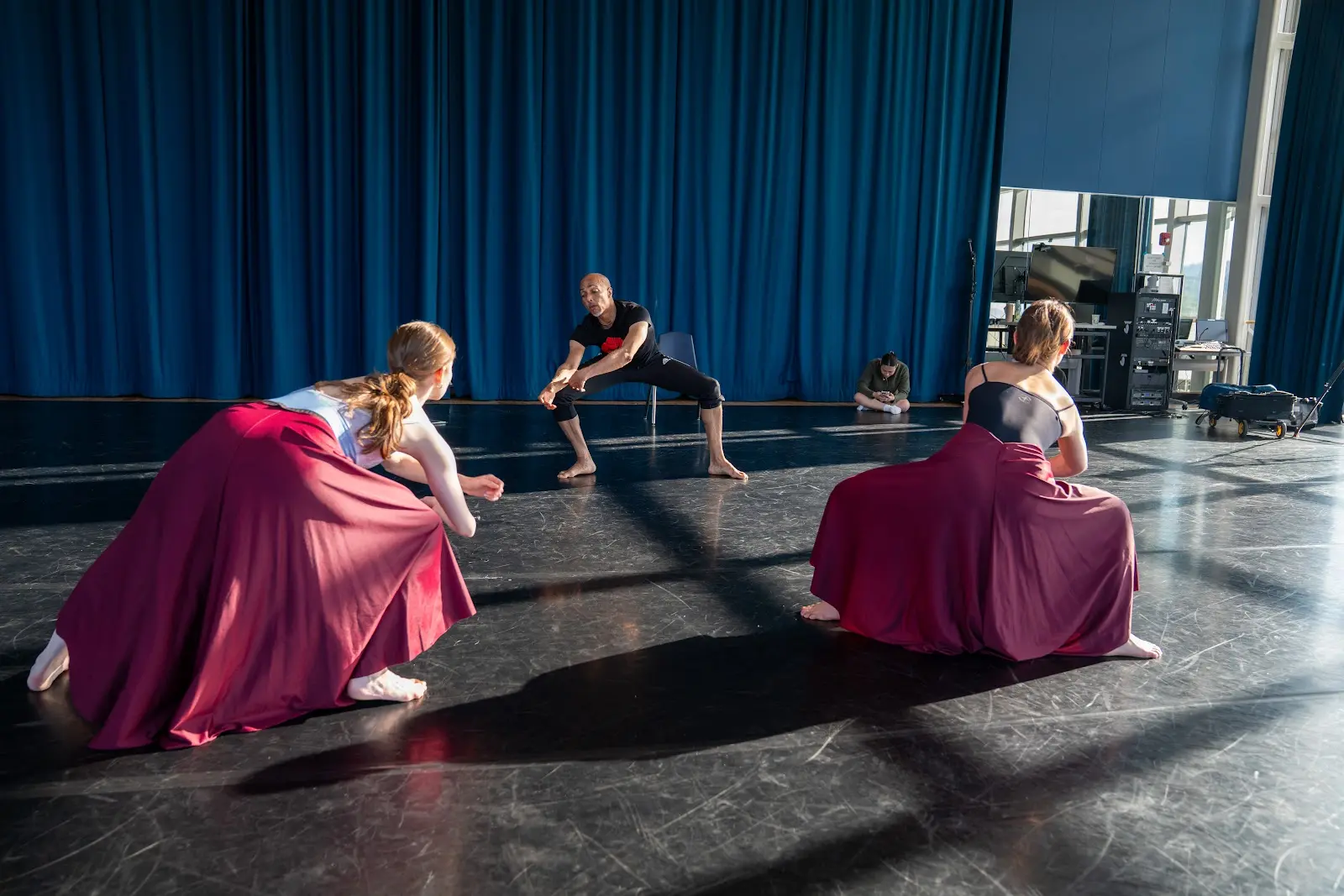
In a revival of 1930s political modernism, students in the dance department brought Jane Dudley’s 1934 contemporary dance piece Time is Money to life on Wednesday, April 23 in the Dance Studio of the ’62 Center for Theatre and Dance, channeling the grind of industrial labor through aching, restrained movement — all while the detached narration of Sol Funaroff’s radical poem echoed alongside them. This particular performance featured Emily Singer ’28 as the poet’s narrator, as well as Clara Pollock ’26 and Caprice Turchiano ’25 as soloists.
The collaboration is part of the work of Contemporary Dance Ensemble (CoDa), a faculty-directed group that teaches students to perform both original works and periodic re-staging projects each semester.
The piece has been passed down from dancer to dancer, with Martin Løfsnes, an assistant professor of dance at SUNY Purchase, learning the choreography from other performers following Dudley’s passing in 2001. Løfsnes joined Artist-in-Residence in Dance Erica Dankmeyer and her students to offer in-person reflections and critiques to the performers after each of their routines, as well as a short speech on the historical context of the piece.
The modernist piece explores themes of labor exploitation and oppression. The dance portion was born out of the Great Depression, drawing on Dudley and her peers’ lived experience as working-class New Yorkers. In the ’30s, many of the production’s early performers and choreographers were factory laborers, Dankmeyer explained. “Dudley was part of a collective called the New Dance Group, and they believed that dance could be a weapon for social change,” she said.
Dudley’s goal was to bring political art back to the people who inspired it, and who embodied its message, Løfsnes explained. “[The piece] was not something to take people away from [the audience’s] daily lives and their daily struggles, but to be part of their daily struggles,” he said.
Løfsnes said it is critical that performers undertaking the piece preserve its themes of misery, but their particular movements can be modified in each rendition of the work. “It’s not just a path of opening the crypt door and dusting it off and seeing what they did back then, but we try to make it relevant in our bodies, in our time — and that’s the challenge of reconstructing dance,” he said.
In teaching each other the routine, the performers reanimate the choreography from one dancer to the next, establishing a continuity in the technique, Løfsnes explained. “Any choreography that I created myself … wasn’t just created by me, but by all the great artists that came before me: the shoulders that I’m still standing on,” he said. “[The performance] has to be passed on from body to body.”
Although the dance is performed without music, the poem features a repeated “tick-tock” sound, adding a scaffolding of rhythm to the piece. This minimalist approach to accompaniment — in which scores of music have been replaced with sparse spoken word — aligns with the broader modernist tradition of the ’30s. “It’s a very specific way of thinking about distilling ideas and distilling shapes and distilling movements and taking away all decorations,” Løfsnes said.
In her notes to Pollock and Turchiano, Dankmeyer explained that the modernist approach should evoke the narrow, impersonal motion associated with industrial labor. “We try to hold and maintain tension.,” she said to the dancers. “You may not always reach your maximum visually or externally because weight and opposition are what we prioritize; you may need to rein yourself in.”
“Feel the way in which you’re almost held or shackled, or repeating small gestures over and over again on an assembly line,” she continued.
According to Singer, the disengaged narrator emulates the role of complacency in class oppression. “The narration is particularly detached from what’s going on, which makes it all the more harrowing, because you’re seeing this really vivid imagery, but it’s also like, ‘How could a voice be so cold and ignorant to that?’” she said. “It lets you interpret the horrible things that must be happening, and the voice that could do something, especially being on stage, but still won’t.”
At the same time, Singer pointed out, there is a necessary symbiosis between the poetic narrator and the dancers. “There’s no movement [for the narrator], but [the dancers] also can’t speak. So, in a way, we’re providing a service to each other,” Singer said.
Løfsnes left the audiences with a final note on the importance of art in political activism. “[The original creators] were a small group of people, not just dancers, they were poets, musicians, actors, documentary filmmakers, that came together and their contribution to the revolution was art,” he said.
Time is Money will be performed at “Pachedu,” which will be held on the ’62 Center MainStage at 7 p.m. on Friday, May 9 and Saturday, May 10.
Correction: A previous version of this article incorrectly stated that Løfsnes learned the choreography from Dudley, which was inaccurate. The article was updated on April 30 at 7:40 p.m.



